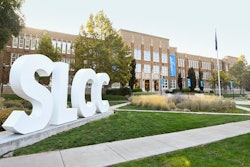It seems that the long battle for state support of tribal colleges is beginning to slowly pay off for American Indian leaders and supporters.
Last week, North Dakota became the fourth state in the country to allocate funds for non-Native students attending tribal colleges. Arizona, Nebraska and most recently Montana are the only other states to provide such funding.
First introduced in 1989, North Dakota House Bill 13-95 was signed into law by Gov. John Hoeven at a signing ceremony at United Tribes Technical College in Bismarck. The bill authorizes $700,000 to be allocated to the state’s five tribal colleges to be used to help defray the costs of educating “non-beneficiary” students. The new funding will amount to about $4,500 per student, according to state reports.
Since tribal colleges receive federal money, they must maintain an open door policy for all students regardless of race. The colleges’ primary source of funding, the Tribally Controlled College and University Assistance Act, is based on the number of enrolled, full-time American Indian students on each campus. But most tribal colleges receive neither state nor federal funding for non-Native students.
According to the American Indian Measures for Success, an internal data collection system used by the American Indian Higher Education Consortium, there are approximately 5,400 non-beneficiary students currently enrolled at tribal colleges nationwide. At UTTC, 10 percent of the students are non-Native. It has long been a source of concern and frustration among tribal college leaders that financially struggling tribal institutions must bear the additional burden of educating students for whom they receive little support.
“Tribal colleges do the same thing for non-Indians as for Indians; they provide valuable career training and keep people off public assistance,” says Tom Shortbull, president of South Dakota’s Oglala Tribal College.
Shortbull says the decline in some state’s economies has led some non-Natives to enroll at tribal colleges to prepare for new careers. Tuition at the colleges is generally significantly lower than at comparable mainstream universities, and the colleges’ close proximities to rural communities allows people to remain near their homes while attending school.
South Dakota currently provides about $3,900 per full-time student to state institutions, but nothing for non-beneficiary students at tribal colleges. The South Dakota Legislature recently voted down a bill similar to the one that passed in North Dakota.
Tribal college leaders maintain that state funding for tribal colleges is a matter of equity and benefits states as a whole.
During local television coverage of the North Dakota signing event, Hoeven said of the bill, “Education not only lifts up the tribes, it lifts up our people and our state.”
–Mary Annette Pember
There are currently 0 comments on this story.
Click here to post a comment.
© Copyright 2005 by DiverseEducation.com





















